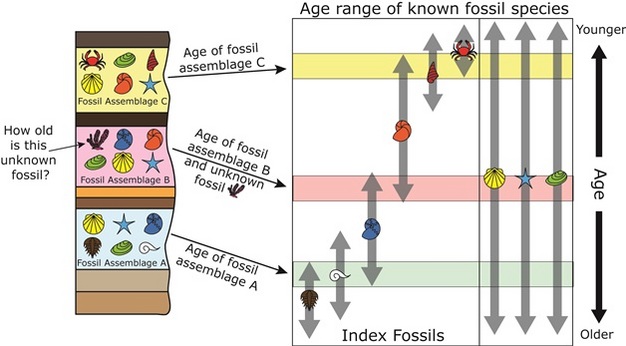
There are two main methods determining a fossils age, relative dating and absolute dating. Relative dating is used to determine a fossils approximate age by comparing it to similar rocks and fossils of known ages. Absolute dating is used to determine a precise age of a fossil by using radiometric dating to measure the decay of isotopes, either . The age of the Earth is approximately ± billion years ( × 10 9 years ± 1%). This age may represent the age of the Earth’s accretion, of core formation, or of the material from which the Earth formed. How do scientists determine the age of By using radiometric dating to determine the age of the age of rocks. Other techniques include.
How To Determine The Age Of A Rock Using Radiometric Dating Techniques. How Old is the Earth: Radiometric Dating

: How to determine the age of a rock using radiometric dating techniques
| Warangal dating sites |
Free dating site for mobile phones |
| Im dating a young man |
931 |
| Second message online dating |
For example, a method based on a parent isotope with a very long half-life, such as Sm, is not very useful for measuring the age of a rock only a few million years old because insufficient amounts of the daughter isotope accumulate in this short time. Argon is not found in nature because it has only a year half-life. Radiometric dating is the term for a method to determine the age of an object based on the concentration of a particular radioactive isotope contained within it. By applying mГјnchen singles kennenlernen law of superposition, relative dates can bedetermined. Is carbon 14 dating radiometric dating? |
Pottery shards can be dated to the last time they experienced significant heat, generally when they were fired in a kiln. Radiocarbon is generally not used for dating rocks. Steno's Law - How to determine the age of a rock using radiometric dating techniques Law of Superposition: He performed measurements on rock samples and concluded in that the oldest a sample
singles leipzig mein account Ceylon was about 1. By comparing the proportion of K to Ar in a sample of volcanic rock, and knowing the decay rate of K, the date that the rock formed can be determined. Outlying data points regularly reported, almost always plotted on the isochron diagram The Earth is old enough that radioactive isotopes with half-lives less than half a billion years decayed away, but not so old that radioactive isotopes with longer half-lives are gone.
How to determine the age of a rock using radiometric dating techniques -
It is called a chart of the nuclides. The "argon leakage model" also attempts to explain why these rocks have about half the argon which seems to be required by the Rb-Sr system. What is radiometric dating? In its simplest form, the geologist simply needs to measure the relative amounts of potassium and argon to date the rock. The age that can be calculated by radiometric dating is thus the time at which the rock or mineral cooled to closure temperature. There is nothing wrong with these ages; they are consistent with the known geologic relations and represent the crystallization ages of the Canadian samples. This is a book designed for easy reading on the general subject of dating.


-
-
-
-